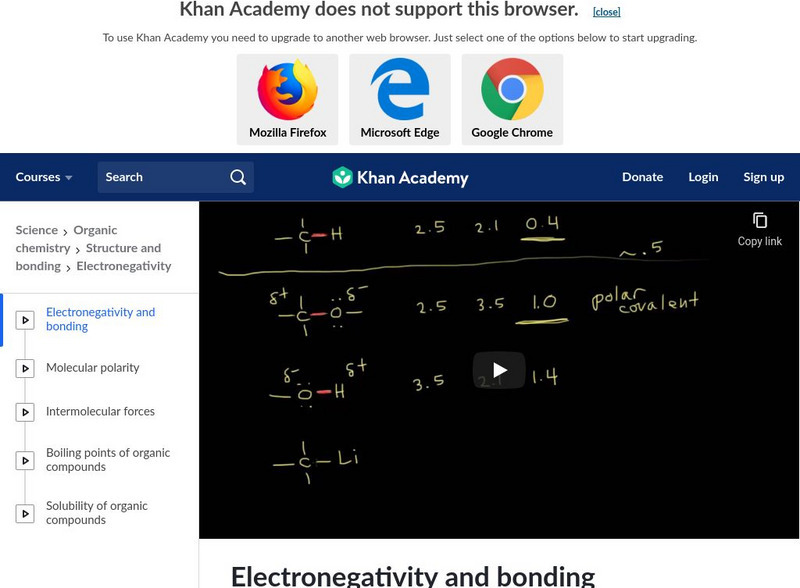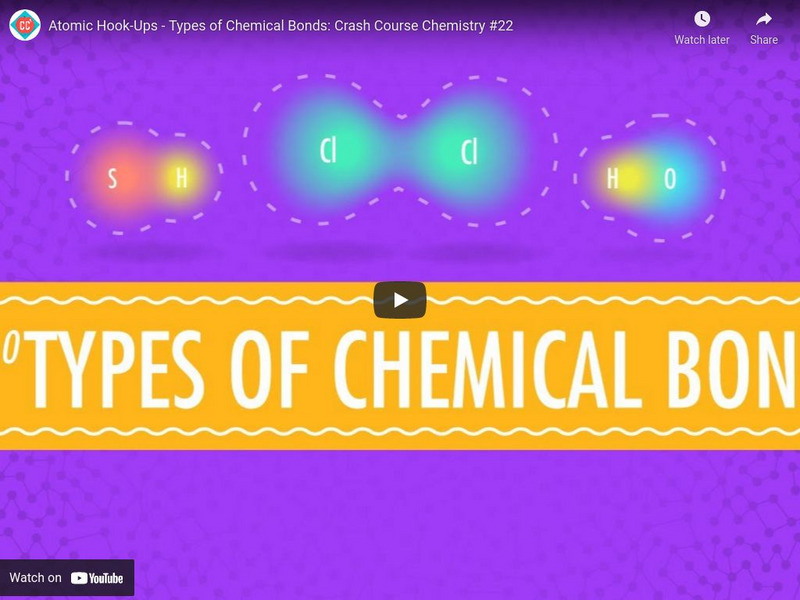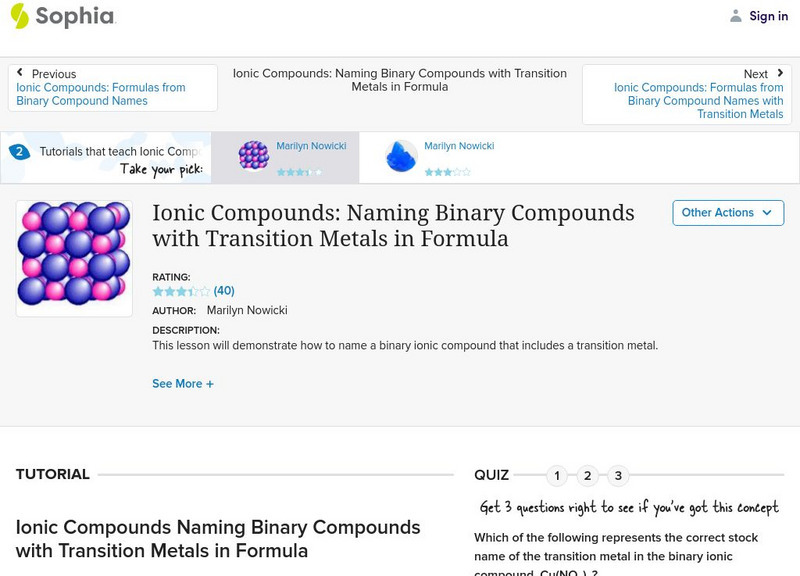Professor Dave Explains
Covalent Bond Energy and Length
We've already learned about different types of chemical bonds, including covalent bonds. But now that we know about enthalpy, and orbitals, and some other concepts, let's revisit the covalent bond and dig a little deeper.
Professor Dave Explains
IIT/JEE Chemistry Practice #16: Chemical Bonding
Practice REAL problems from actual past IIT/JEE exams with Professor Dave!
Professor Dave Explains
Practice Problem: Lattice Energy and Ionic Bond Strength
We know that within an ionic compound, the ions are held together by ionic bonds. What is the strength of those bonds, and what is the lattice energy possessed by the entire lattice? Can we compare two compounds and say which has the...
Professor Dave Explains
Practice Problem: Naming Ionic Compounds
We know about ionic bonds and ionic compounds, how do we name them? Let's practice going from formula to name, and also from name to formula.
FuseSchool
Ionic Equations
Learn the basics about Ionic equations. Precipitation reactions involve two solutions reacting to form an insoluble product, the precipitate. What does that mean? Find out more in this video!
Mazz Media
Electron Energy Levels and Valency
In this video students will learn that an electron energy level or energy shell is the orbit followed by electrons around an atom’s nucleus and that the number of electrons within these shells or energy levels balances out the positive...
Curated Video
Atoms and their Interactions - The Chemistry of Life
In this section, I talk about elements, atoms and how they interact. I deal with two types of bonds: Covalent Bonds and Ionic Bonds. I also talk about pH, chemical reactions and metabolism.
FuseSchool
Formulae Of Ionic Compounds & Their Names - Part 1
In this video learn how to write ionic compound formulae and how to name ionic compounds. This is the first of a two part video series.
Professor Dave Explains
The Chemical Bond: Covalent vs. Ionic and Polar vs. Nonpolar
Ionic Bond, Covalent Bond, James Bond, so many bonds! What dictates which kind of bond will form? Electronegativity values, of course. Let's go through each type and what they're all about.
FuseSchool
Ionic Bonding of Lithium Fluoride & Potassium Oxide
Learn the basics about the ionic bonding of calcium chloride, lithium fluoride and potassium oxide, as a part of the overall properties of matter topic. An ionic bond is defined as the electrostatic attraction between oppositely charged...
Visual Learning Systems
Introduction to Ions and Ionic Bonding
This video explains the concept of ions and ionic bonding in a clear and concise manner. It discusses how atoms become charged when they gain or lose electrons, and how oppositely charged ions are attracted to each other to form an ionic...
FuseSchool
Ionic Compounds & Their Properties
Learn the basics about Ionic Compounds, how they are formed and what their properties are.
PBS
Pbs Learning Media: What Holds a Molecule Together?
This video/animation illustrates that a molecule as a small group of atoms stuck or bonded together with electrons. Dr. Chris Muhlstein introduces the idea of these three primary types of bonds: ionic, covalent and metallic; animations...
Khan Academy
Khan Academy: Structure and Bonding: Electronegativity and Bonding
Learn how to classify bonds as covalent, polar covalent or ionic by using the differences in electronegativity in this video. Video explains the Pauling scale to find the electronegativity differences in bonding. [11:38]
Khan Academy
Khan Academy: Chemistry: Ionic, Covalent, and Metallic Bonds
A video lecture investigating the basics of chemical bonding. The video shows how bonds are formed by giving up or taking an electron, sharing electrons, and between metals. Examples of each type (ionic, metallic, and covalent) are...
Other
Capella University: Periodic Table of the Elements: Ionic and Covalent Bonds
A narrated introduction to ionic and covalent bonds through the platform of an animated periodic table of elements. [4:40]
Sophia Learning
Sophia: Ionic Bonding: Lesson 3
This lesson will define an ionic bond. It is 3 of 3 in the series titled "Ionic Bonding."
Crash Course
Crash Course Chemistry #22: Atomic Hook Ups Types of Chemical Bonds
Learn about how chemical bonds form in order to minimize the energy difference between two atoms or ions. Also find out the difference between covalent and ionic bonds.
Khan Academy
Khan Academy: Electronegativity
Explains electronegativity, an important concept in organic chemistry. [11:37]
Sophia Learning
Sophia: Intermolecular and Intramolecular Forces
This narrated lesson will compare and contrast intramolecular and intermolecular forces. [5:22]
Sophia Learning
Sophia: Naming Binary Compounds With Transition Metals in Formula
A narrated tutorial demonstrates how to name a binary ionic compound that includes a transition metal. [5:22]
Next Vista for Learning
Next Vista for Learning: Chemical Bonding
Learn the basics of ionic and covalent bonds with this video. Video gives an example of how each type of bond with form with easy to follow visuals. [1:29]
Sophia Learning
Sophia: Determining Bond Polarity: Lesson 1
This lesson will demonstrate how to calculate the difference in electronegativity to determine whether a bond is ionic, polar covalent, or nonpolar covalent.. It is 1 of 2 in the series titled "Determining Bond Polarity."
Sophia Learning
Sophia: Properties of Ionic Compounds: Lesson 2
This lesson will describe the components of an ionic bond, how they are arranged in a lattice structure and basic properties of ionic compounds. It is 2 of 2 in the series titled "Properties of Ionic Compounds."












